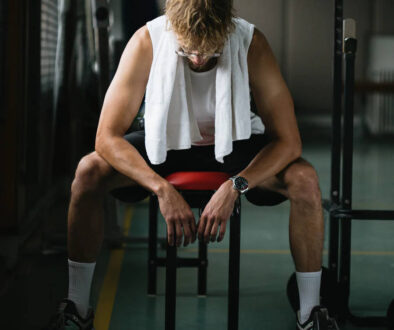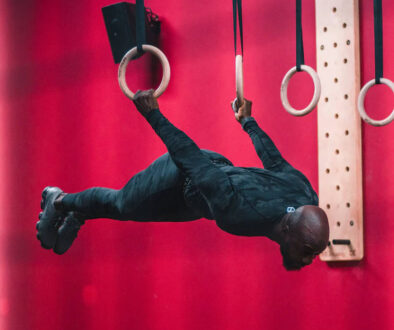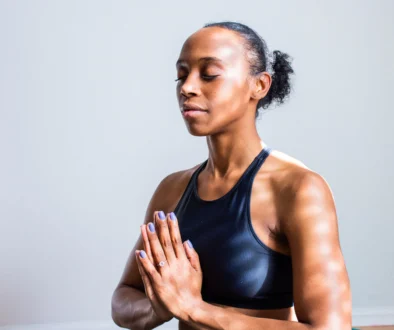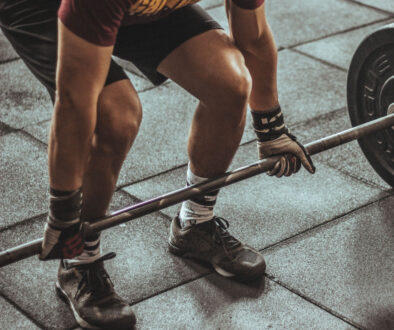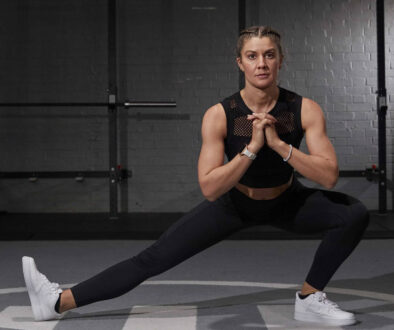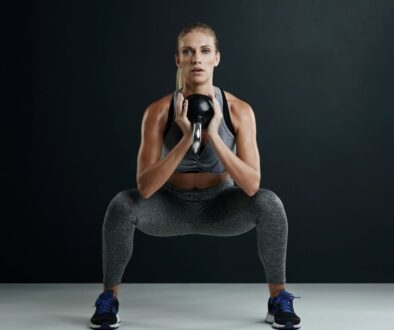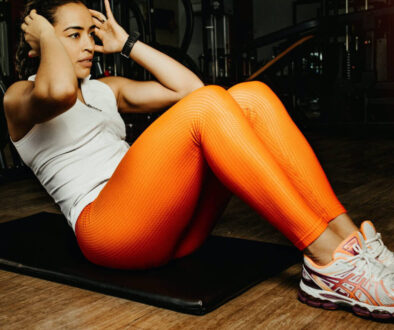The 5 Best Core Exercises for Beginners
A strong, stable core is essential to an active lifestyle. Your core muscles are involved in almost every movement you do and keep your back and pelvis well-supported, avoiding issues with pain and reducing the risk of injury. And, let’s be honest, many of us want a toned abdomen – to achieve that, it is exercises that work our core that we need to concentrate on.
If you are new to working out and are wondering which are the best core exercises to strengthen this essential area, this article has you covered. We’re going to cover some options which are very effective, but hard work, as well as a couple that are a little more gentle. All of these moves are suitable for beginners and we’ll suggest how you can modify them too.

The importance of a strong core
Before we get stuck into the exercises, let’s take a quick moment to understand why this group of muscles are so important. It isn’t just the aesthetics of having a toned tummy that matter here, although that is what many people are interested in.
Your core includes more than just your transverse, oblique, and rectus abdominal muscles. It also covers your back, pelvic floor, and gluteal muscles. These muscles are involved in every gross motor movement you make, so a strong core helps in everyday activities like walking, sitting, or even just standing still.
The muscles of your core support your bones and hold them in their proper alignment. When our cores are weak, it is easier for our back or pelvis to become misaligned, causing us pain. Lower back pain especially is often associated with a weaker core. With so many of us spending much of our lives hunched in front of computer screens, a strong core is more important than ever to prevent back problems and help us to keep a good posture.
If your goals are fitness-based, a strong core is essential in supporting you as you run, lift weights, or attempt a dancercise routine. If you are finding it difficult to do things like push-ups or an overhead press, it is likely as much to do with your core as your shoulder and arm muscles. And have you ever tried swimming without using your core to help you float? It isn’t possible.

Without our core working hard to stabilise us, both everyday movements and our broader workouts will be less efficient. Other muscle groups have to work harder to compensate, putting us at greater risk of injury.
So even if you aren’t too fussed about working on your six-pack, a strong core is still essential. Let’s get you started with some simple exercises you can easily do as a beginner, even at home.
Just a quick note before we get stuck in – as with any time you are about to start a workout, it is important to do a proper warm-up first to avoid injury. Make sure you stretch well and do some basic warm-up exercises before you begin. This is especially important for beginners since our bodies are less used to the moves.
1. Plank

The plank is a classic for a reason – it is a great way to strengthen your core. It works your transverse abdominis, the corset-like muscles that define your waist and support your lower back, and your rectus abdominis, the front abdominal muscle that gives that six-pack look and supports your spine. It also strengthens your arms, shoulders, chest, and back. It even gets your gluteal muscles (the ones in your butt) working, as well as your quads, which are the muscles at the front of your thighs.
There are lots of different variations of the plank. For beginners, it is best to start with the basics, which means a combination of forearm and straight arm planks.
Get started with planking
As a beginner, you may decide to start off with your knees on the floor – it depends on your existing core and upper-body strength. For a forearm plank, you have your forearms flat on the floor, arms bent at approximately a 90 degree angle and either your knees (for absolute beginners) or toes supporting your legs. The rest of your body should be raised off the floor.
In a straight arm plank, you have your hands flat and your arms straight. Again, you can bring your knees to the floor if you need too or come up onto your toes if that is available to you.
Tips for Planking
The most important thing to remember in a plank is that you want your body to be a straight line. Don’t be tempted to drop your hips or raise them into the air, which is the mistake many people make at the beginning.
If you have a mirror (or reflective window) to hand, use it to check your position. Alternatively, ask someone else to check it for you the first few times until you get used to how the correct positioning feels.
Set a timer – a plank minute feels like about ten regular minutes so you don’t want to go by guesswork here. You might want to start at just 15 seconds at first, then work your way gradually up to a minute.
If you prefer a bit more guidance, there are simple plank apps you can download to your phone that will help you develop your plank workout.

Other Planking Variations
As well as forearm and straight arm planks on both arms, you can do side planks to work the muscles on each side of your body even further. Again, start on your knees if you need to, and concentrate on keeping your side waist lifted so that your body makes a straight line.

2. Bicycle Crunch

Like the plank, the bicycle crunch is a simple but very effective core workout which utilises many different muscles, including the rectus abdominis, the external obliques (the muscles that overlay your transverse abdominis on your side waist), your quads, and your intercostal muscles – the ones between your ribs which are involved in breathing. If you’ve tried this deceptively simple move before, you know just what a workout it can be.
Get started with bicycle crunch
To do a bicycle crunch, lie on your back and raise your legs, bent at the knee, to a 90-degree angle, so that your calves are parallel to the floor. Support your neck with your fingers interlaced behind the base of your head.
Raise your shoulders, neck, head, and the very top of your back off the floor. Keeping your lower back and hips flat on the floor and your hands behind your head, twist your upper body to bring one shoulder towards the opposite knee. At the same time, extend your other leg out straight. Return to your beginning position and then repeat the move on the other side.
You can choose whether to do a certain number of crunches or to do as many as you can within a time limit. Either way, keep gradually increasing the amount to carry on strengthening your core muscles.
3. Extended Rear Leg Lift

The extended rear leg lift is a good core exercise for beginners because it keeps you in a fairly stable position while still working your core – in this case, the main focus is on your glutes, but it also works your lower back and, to a lesser extent, your rectus abdominis, which stabilises you while you perform the move.
Get Started with extended rear leg lift
Come into a tabletop position on all fours, with your back as flat as you can manage. Your arms should be about shoulder-distance apart and your legs at hip-distance so that you are in a very stable position.
Keeping your hips level, extend one leg upwards, keeping it bent at 90 degrees so that the bottom of your foot points at the ceiling. Hold it up for a breath, then bring it back down and repeat the move on the other leg.
Start with 10 reps each side and 3 sets, then gradually increase the number of reps or sets as you get stronger in the movement.
4. Boat Pose

This yoga pose can easily be adapted for different levels of difficulty. It is a balancing pose that forces the muscles in your back and abdomen to work hard to hold you in position. It also works your quads.
Get started with boat pose
Start in a sitting position with your knees drawn up to your chest and your arms extended in front of you.
Keeping your back straight, shift your weight onto your tailbone as you lift your feet off the floor and extend your legs, toes pointing towards the ceiling. Your body should be in a V-shape, with your arms stretching forwards past your legs. Don’t be tempted to round your back.
If extending your legs feels too challenging, you can start by keeping your knees bent and calves parallel to the floor, then extend one leg, working up to being able to extend both legs.
Hold the position for five breaths, then release. Repeat it three times.
5. Mountain Climber

While extended rear leg lifts and boat pose are more gentle ways to strengthen your core, the mountain climber is another move to get your abdominals working hard. It can be good cardio too, if you do the motion fast, but beginners may want to start off slow.
Get started with mountain climber
Start in a straight arm plank / push-up position with your arms slightly wider than shoulder-distance apart. Keeping the rest of your body as still as you can and your hips level, drive one knee forward towards your chest, bending your knee, and lifting your foot off the floor.
Return that foot back to its original position and repeat the move on the other side.
Do eight reps per side and repeat in three sets. As you get stronger, you can up the amount of reps or the number of sets. You can also start to increase the speed of the move as your cardio fitness improves.
Taking it to the next level: exercise kit that will improve your core

These five exercises are relatively simple and all you need is your own body weight, although you might also want a mat to protect your joints. But when you are ready to take your core workouts to the next level, there are some pieces of exercise gear that can help.
As well as ab booster machines and ab wheels, which specifically target your core, hand weights such as dumbbells and kettlebells can be used to maximise the effectiveness of your core workout. Because you activate your core to stabilise yourself when you lift weights, particularly in overhead lifts, they are great for working your core at the same time as your upper body.
You can read more recommendations in our post on the best home gym equipment, but we’ve listed the best options for core training here too so that you have them for quick reference:
References
What Muscles Do Planks Work? How to Do a Proper Plank, According to a Personal Trainer, Prevention, https://www.prevention.com/fitness/fitness-tips/a28747774/muscles-planking-exercise/, consulted 23/11/2020
What Muscles Do Bicycle Crunches Work? Livestrong, https://www.livestrong.com/article/540887-what-muscles-do-bicycle-crunches-work/, consulted 23/11/2020







